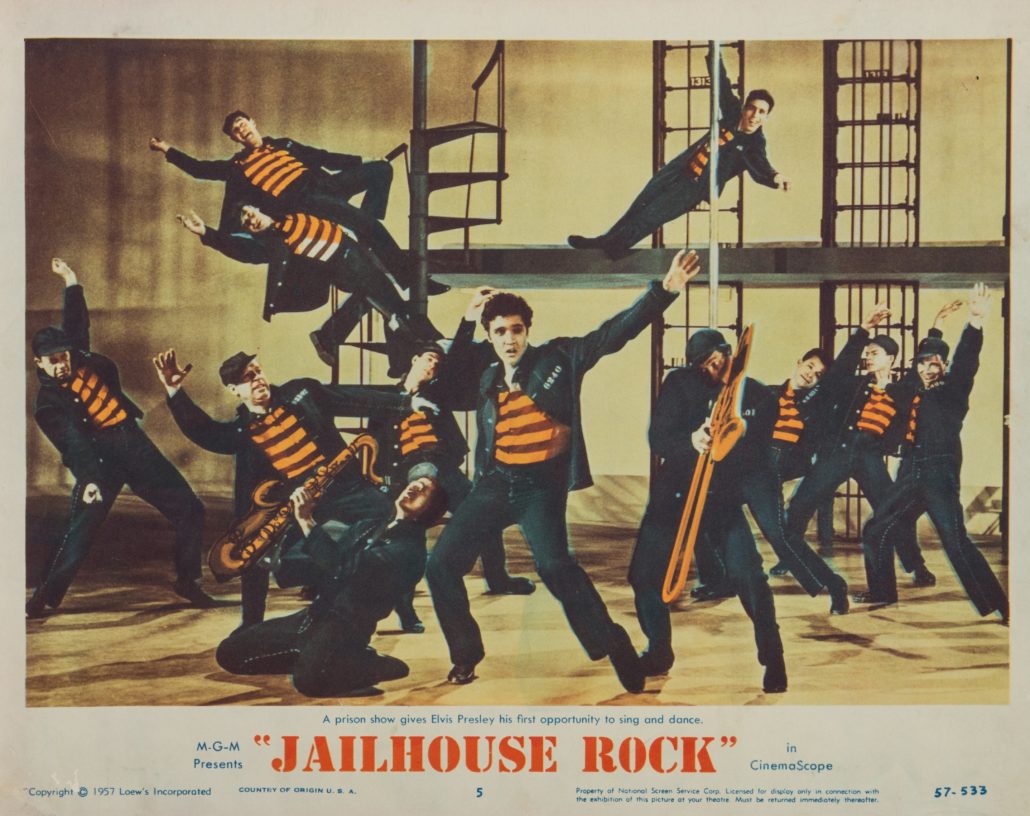To coincide with our interview with new Norton Museum Executive Director Elliot Davis, in our July/August issue, we also had a chance to interview the collector and curator of the museum’s splashy summer exhibition, “Coming Soon: Film Posters From the Dwight M. Cleveland Collection.”
Having amassed his favorites for the past 40 years, Cleveland possesses one of the nation’s foremost collections of movie posters. More than 215 of them, from the silent era through the 21st century, will be on display beginning July 12 at the Norton Museum. Cleveland discusses his process, his preferences and the rich history of film-posterdom, alongside curator Matthew Bird, in this Q&A with Boca mag.
The show has over 215 posters.
What was the first movie poster that grabbed you?
Cleveland: It was a lobby card, 11×14, from “Wolf Song,” which is a 1929 film was Lupe Vélez and Gary Cooper, released by Paramount. This was a time period where Paramount, from late ’28 until about ’31, produced posters that are so vibrant that the colors jump off the page.
How did you get into collecting?
Cleveland: I fell in love with that one card and had to own it. At the time—this was in 1977—most collectors, including the guy who owned that, would not sell. I had to go out and find stuff that he preferred, and then we would make a trade. This is how this hobby was in the ‘70s and through the mid-‘80s, when auctions started handling these things. But until that time, it was never about the money. It was just paper for paper, down and dirty. That was how it worked. With some people, it’s still like that, and I love doing that. It’s great when it’s all about the posters, and everybody knows the rarity.
Is there a thrill in the hunt?
Cleveland: Yes. The hunt is what has driven me over the years, and I do love hunting things down, and uncovering these gems in the rough. I love going to flea markets at 8 in the morning and coming up with creative ways of hunting things down, for people who might have worked in a movie theater, or owned a theater chain, or something of that nature. I just love the process of the hunt.

Was there a golden age of posters?
Cleveland: Yeah, I think the 1930s is the golden age of film, and for the posters. After that point, when TV came in in the ‘40s, the quality of the posters, in my mind, dropped dramatically.
Matthew Bird: Many of the silent films were not exciting, but the posters were incredibly vibrant. When movies became vibrant, all the posters were doing was representing what was happening onscreen, because the actual experience of seeing the movie had reached its full promise. Posters never recovered from that; there are ones that are beautiful and artistic and interesting, but they didn’t need to oversell an experience anymore.
Is a great movie poster defined as such by its artistic qualities, or by its effectiveness as an advertising product, or somewhere in the middle, or both?
Cleveland: If we were movie executives, we would answer that one way. From a collector’s standpoint, I collect stuff I love. So if I don’t love it, I don’t want to own it. It has nothing to do with who’s in it, or who directed it, or who the producer was, or what the studio was, or what film genre it was. That’s what most collectors focus on, but I’m completely indifferent to all of that.
Bird: That’s one of the questions I’m intrigued by, because these were a tool to sell tickets, to fill seats, first and foremost. So it’s hard to answer your question. What they were assigned to do is not the same as what they do artistically or historically.
Cleveland: The other thing on that is that as Matt said, these are commercial advertising pieces, so they were meant at the time to grab you by the lapels and yank all of us into the theater. Now, in retrospect, we get to look at them, and having seen these films, we can determine how evocative they are of the essence of the film. In many cases, I just love the image. I don’t care about the film. But if you know that film, it means even more when you see the poster.

Is star power a vital component in a poster’s success?
Cleveland: For a lot of collectors it is. I would say, overall, people collect on film title first, and then there are a lot of people who collect on stars. And they’re completists, so they want everything on Judy Garland, or whoever it might be. When it comes to genre, the strongest and most powerful group is the Universal horror people. They are always out in front of the pack. They only collect horror posters, and they’re the most obsessive group, and really interesting to deal with, too. I call them the mothmen, because they basically are up between 8 or 9 at night and 10 o’clock the next morning, so if you want to conduct business with them, you meet their schedule.
Are there great examples of posters that go a mysterious route, and are effective by showing us very little of what the movie is about?
Bird: I think all the early ones. It’s a person in a jacket and a cool piece of type that makes it seem suggestive.
Cleveland: That was the star system, where in the ‘30s, they really started selling stars. People wanted to go see Clark Gable in a film with Jean Harlowe. All they had to do is a nice rendition of the star, and people would go and see the film. The interesting thing about your question is with film with a surprise element, like “Psycho.” The poster for “Psycho” tells you nothing about what the film is about. There’s a picture of Janet Leigh, and a tagline, which is the only thing that gives you a clue. It says something like, “this is not what you’re expecting.”
Can you get into the difference in foreign posters of Hollywood movies, versus domestic ones?
Bird: This show does that really well. One of the things that Dwight’s collection has a lot of is foreign posters, both for overseas movies and foreign films advertised here. The whole back wall of the gallery is given over to that zone. On the back, it’s movies you know, but from other countries; then we pull out multiple posters of the same movie from different countries so you can see different approaches.
Cleveland: There’s an incredible richness of Soviet bloc poster making, from Poland, Hungary, Czechoslovakia. The American and Polish “Sunset Boulevard” posters are radically different. On of them is so unhinged, and it’s all about the psychology of the movie. European posers had a more modern-art approach, it seems.
The tradition of posters is older in Europe. Posters were classy first, and then devolved into the Moulin Rouge. We didn’t have that in America. Our references were different ones. There was already a tradition of posters as art for Europe, and there was also artistic skill and lithographic skill.
This story was inspired by our July/August 2019 issue of Boca magazine. For more content like this, subscribe to the magazine.







